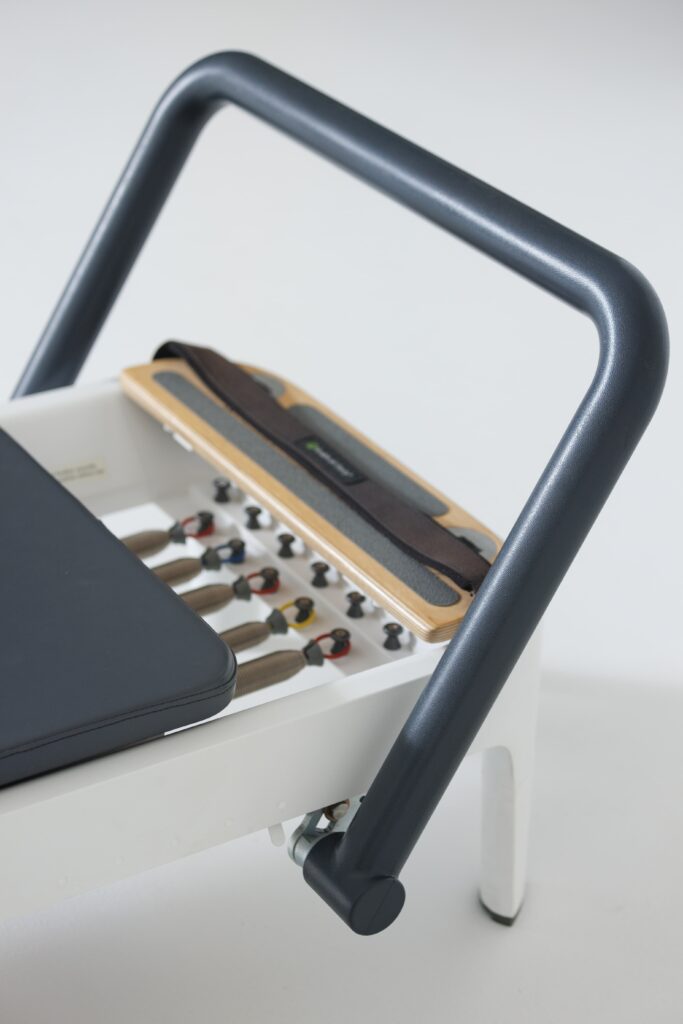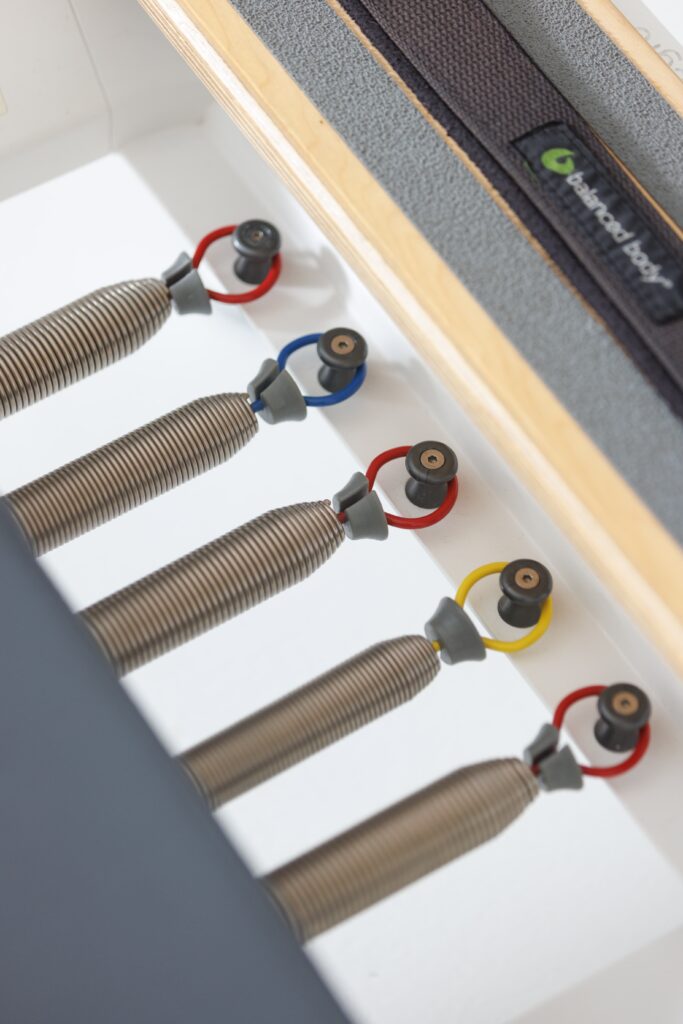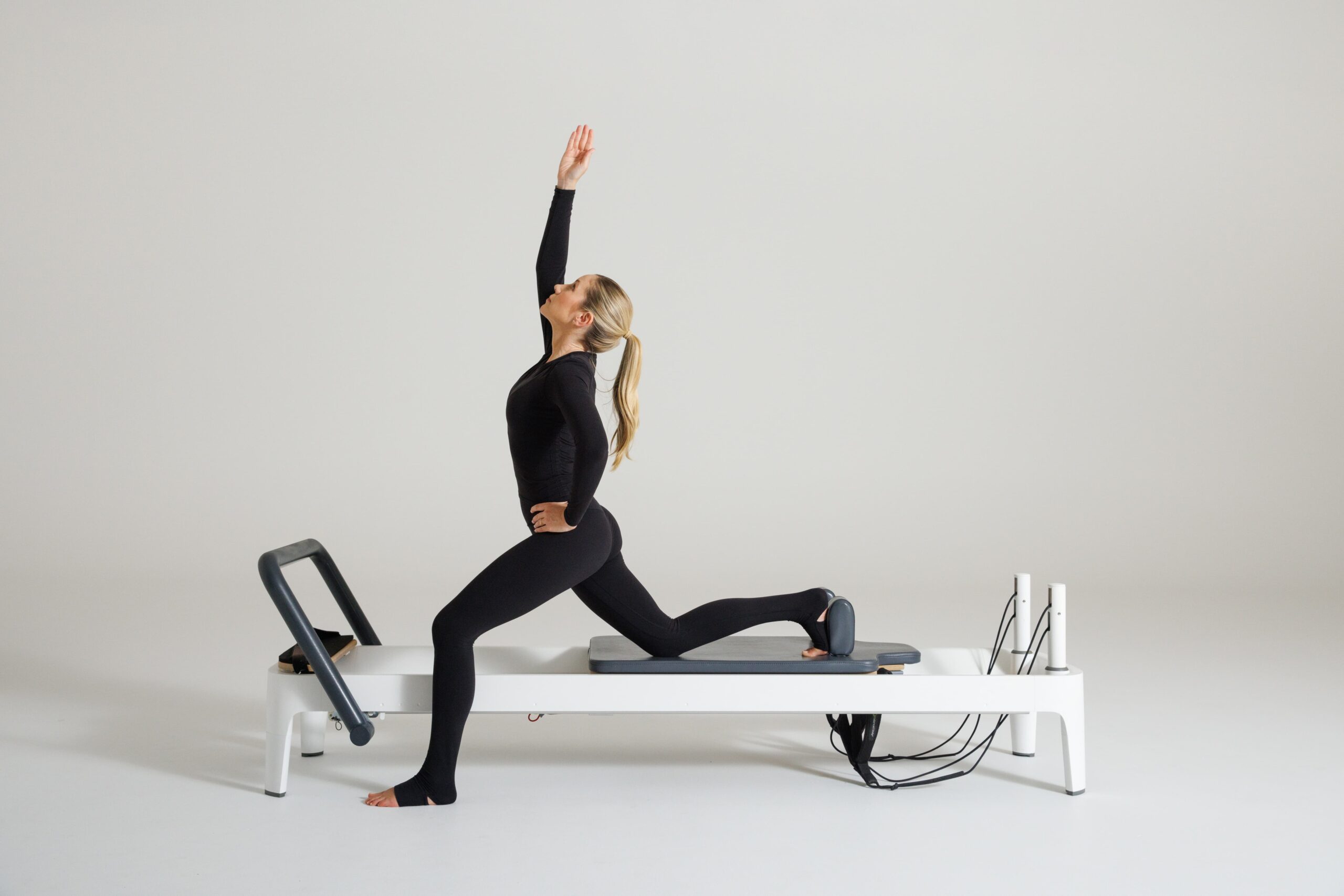Reformer Pilates challenges your strength, flexibility, and control, giving you a full-body workout like no other. Ready to elevate your Pilates practice? Here’s what you need to know.
How does reformer Pilates differ from traditional mat Pilates, and what are the key benefits of using a reformer machine?
The foundations of matwork Pilates uses our bodyweight to implement a program of layered movements, isometric and isotonic holds, with the addition of small equipment to lengthen, strengthen and tone the body. What makes Mat Pilates so unique, is that without any equipment, you have the ability to regress or progress the program to suit all fitness levels from beginners, injury-prone or elderly to advanced movers and elite athletes.
Reformer Pilates is based on the foundations of the matwork practise, introducing a Reformer machine to add weight, resistance and manoeuvre the body into positions which would otherwise not be achievable. The Reformer workout is a high-intensity, low-impact workout, which does not compromise the muscles or joints. Reformer Pilates takes the foundational Pilates exercises and builds on these, by applying varying levels of resistance, weight and moving components to fatigue the muscles, build strength and tone. The Reformer machine offers a diverse range of exercise sequences, making it both challenging and accessible to all.
The main benefits of Reformer Pilates are:
- Modifiable and customisable to all levels.
- Highly beneficial for injury rehabilitation – performing exercises in a horizontal position, to avoid any weight-bearing or high impact exercises for injury rehabilitation.
- Helps to balance the body – improving coordination, relieving pain and tension and building even strength and tone.
- Spring resistance effectively strengthens and tones the muscles.
- Improves flexibility, moving the body into new positions.
- Supports the body for clients who struggle with balance and coordination.
- Greater variety of exercises


Can you walk us through the basic components and features of a reformer machine? How do these elements contribute to the effectiveness of a reformer Pilates workout?
The main components of the Reformer include the carriage, foot bar, springs, straps and jumpboard. These are the key components you can modify to progress or regress the movements and will both challenge and support each movement. The carriage is the moving bed at the centre of the reformer. The carriage resistance relies on the springs and the straps are used to move the carriage. The springs connect the carriage to the frame of the machine. Each Reformer is different, however each combination of strings applies a varying level of resistance to increase or decrease the intensity of each movement. The straps support your legs or arms, gliding the carriage along the frame to build pace and fluidity, against the resistance of the springs. The footbar can be adjusted to support your hands or feet, again used to move your body with the carriage, up and down the frame. The jumpboard adds a platform for your feet or hands to “jump” or “spring off”, which adds pace and speed to your movements. The addition of the jumpboard brings a level of cardio to your workouts.
What makes Reformer Pilates suitable for individuals with varying fitness levels and goals? Are there modifications that can be made for beginners or those with specific physical limitations?
What makes Reformer Pilates unique, is its ability to modify or transfigure to regress or progress certain movements, depending on the client. Taking the Matwork fundamentals and applying varying levels of spring resistance or weight, Reformer Pilates will build strength, improve posture or rehabilitate injuries and imbalances. Similar to strength training or high intensity workouts, Reformer Pilates combines weight with resistance and high repetition movements to fatigue and strengthen the muscles.
However unlike running or HIIT, Reformer Pilates works the body in a supported or horizontal position, which minimises impact to the joints and muscles. This is particularly beneficial to rehabilitation clients or clients with physical limitations, as they are able to regain their strength and mobility in a safe and supported position.
How does Reformer Pilates promote overall strength and flexibility, and are there specific muscle groups that are targeted more than others during a typical session?
The springs, straps and moving carriage allows the body to move into positions which would otherwise not be possible. The machine supports the body to move into extension and flexion, improving your flexibility and mobility through layered and high repetition sequences. Reformer Pilates integrates varying levels of resistance using the springs to gradually fatigue the muscles and build strength.
A 20-minute Reformer session has the ability to activate every muscle in the body, ensuring a total body workout every time. Rather than engaging our global muscle groups, Pilates is unique in that it activates all the smaller muscles which support our joints, posture, balance and ability to move with efficiency and confidence.
In terms of body alignment and posture, how does reformer Pilates contribute to improvement, and what cues should individuals pay attention to during their practice?
Nearly all of the movements we teach in Reformer Pilates engage the core muscles. A strong, stable and active core is essential to activating your glutes, legs and upper body. Your core supports your entire body and ability to stand tall, walk and move with efficiency. Reformer Pilates works your body in a balanced and neutral position, which works to realign your body, relieve tension and imbalances and improve your posture.
Are there any common misconceptions about reformer Pilates that you frequently encounter? How can these be clarified to provide a more accurate understanding of the practice?
There are many misconceptions that are associated with Pilates, often be it too easy or too difficult. While Mat Pilates has honed a “too easy” label, Reformer is often classed as “too difficult” due to its unique shape and function.
On the contrary, Mat Pilates has the ability to challenge the most elite athletes, and Reformer Pilates has many benefits for beginners and injured clients. The straps, springs and moving carriage might be intimidating to someone who has never tried it. It requires focus, mind-body connection and patience.
What role does breath control play in reformer Pilates, and how does it contribute to the overall mind-body connection during a session?
At Fluidform, we connect breathing techniques with controlled, targeted movements which require deep concentration and muscle activation. We use our inhale to prepare for each movement, and our exhale to move, which can be highly meditative and stress-relieving. When you allow yourself to consider your breath and move mindfully, you are releasing endorphins (positive hormones) and reducing cortisol (stress hormones). Connecting your breath with each movement allows deep abdominal connection, improving your form and maximising the benefits of each movement in your body.
For someone new to reformer Pilates, what advice would you offer to enhance their experience and maximise the benefits?
- Forget everything you think you know! Find a teacher you trust, listen to their cues and allow your mind to connect with your body to really feel the movements.
- Tune into your mind-body connection. When the mind and body are at ease, you are able to properly connect and activate your deepest muscles for the best results. – Find a teacher or online program you trust, focus on perfecting your form and technique before advancing and challenging your workouts.
Book a Reformer class with Fluidform today! Click here to book.
Don’t forget to follow us on Instagram too!





